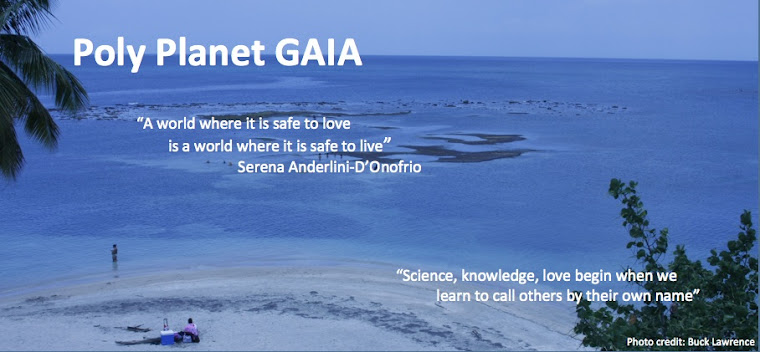Dear Earthlings:
The
EcoSex course at U Conn is in process. It's a great experience. We
are reading amazing books. Thinking out of the box and across
disciplines. Students are sending their responses in, with discussion
questions. In class, we connect the dots: a
holograph of what we've read together, the "required readings."
Multiple perspectives and good synergy. Here, we offer a glimpse.
Lynn Margulis and Dorion Sagan's Mystery Dance was one of two theory-of-science books. We got four responses: from John, Alissa, Rhiann, Adam, and Michael.
Here's Michael's take:
Response to Lynn Margulis and Dorion Sagan's Mystery Dance: On the Evolution of Human Sexuality
Question: At a point in the first
Chapter, Marguiles uses her arguments about ritualistic violence inherent in males
and sperm competition to offer an explanation for gang rapes. Do you agree with
her perspective or not? Why?
Michael Maranets
Published with permission
WGSS 3998 - Ecosexuality and the Ecology of Love
Prof. Serena Anderlini-D'Onofrio
U Conn, Storrs, Spring 2013
Dear Earthlings:
Let "nature" be your teacher in the arts of love. Education is the heart of democracy, education to love. Come
back for more wonders: Students Responses to appear every Tuesday.
Book Reports to be scheduled soon, every other Thursday. Check out our summer offerings: Ecosexuality in Portland, OR, July 17-21. Info and Registration here!
Namaste,
Serena Anderlini-D'Onofrio, PhD
Gilf Gaia Extraordinaire
University of Puerto Rico, Mayaguez
Follow us in the social media
Poly Planet GAIA Blog:
http://polyplanet.blogspot.
http://polyplanet.blogspot.
Website: www.serenagaia.com
Be Appraised of Ecosex Community Project PostaHouse
Become a Fan: www.facebook.com/GaiaBlessings
Author's Page/Lists all books:
YouTube Uploaded Videos: http://www.youtube.com/









